The October read aloud theme is Non-Fiction and reference books. The books chosen are highly informative, visually appealing with inviting design elements and explore facts and information in a way that is accessible to children. This selection of books is suitable for middle primary school children to lower secondary school students. The titles explore subject areas relating to Science, History and Geography.
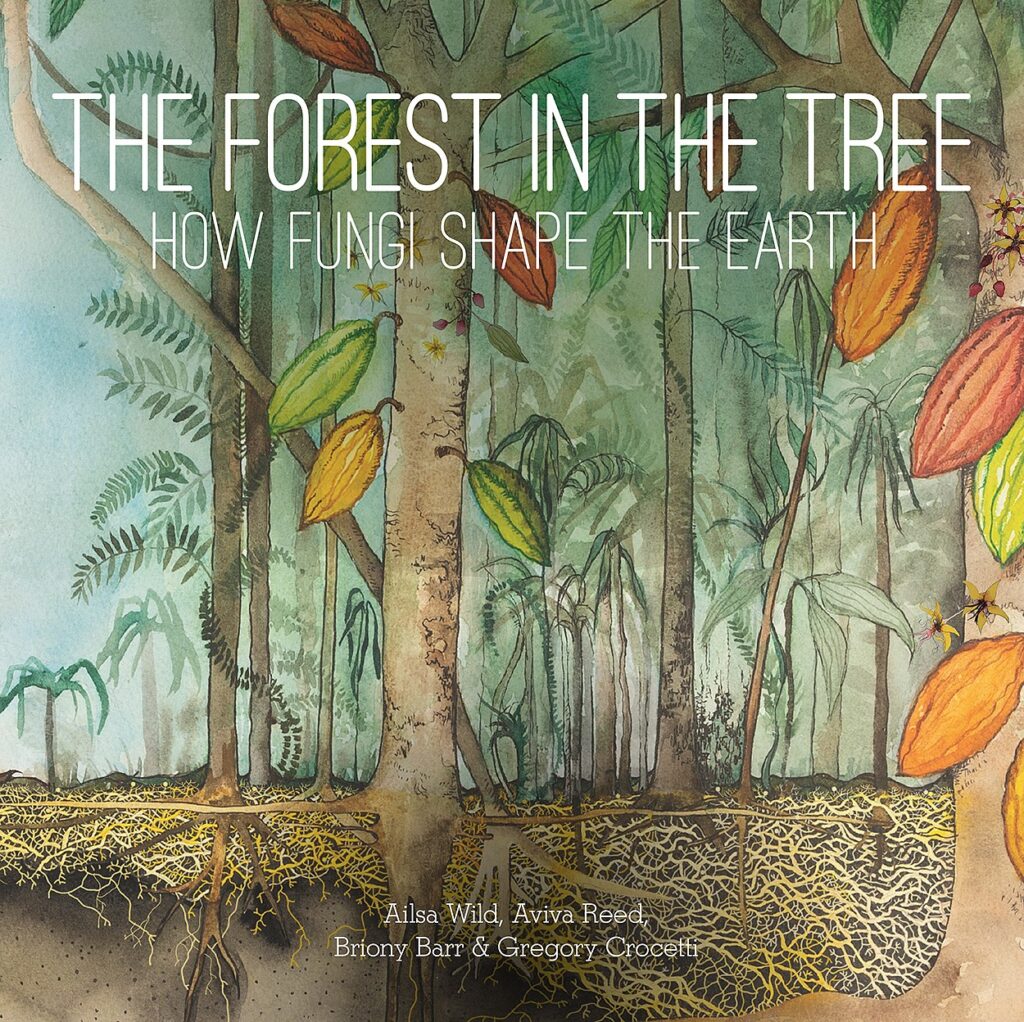
‘The Forest In the Tree: How Fungi Shape The Earth’ by Alisa Wild, Aviva Reed, Briony Barr and Gregory Cocetti is a story for children around 8 to 12 years old and told from the perspective of a tiny fungal spore who has a thread which attaches to Broma (a cacao tree) and this begins their ‘wood wide web’ connection. This is a story about their symbiotic relationship with the tree sending sugar to the spore and the spore finding nutrients and water for Broma and her children – the baby trees. This story explores the ways they work together with the forest and the microbes in the soil, then drought occurs and they are challenged to work together to survive. This book is visually driven, it contains detailed and labelled illustrations that bring the scientific concepts to life and help to make this science adventures engaging and accessible to children. Even though this story is aimed at children, the scientific concepts are not watered down. At the end of the book is further explanation about the science behind the story and a glossary.
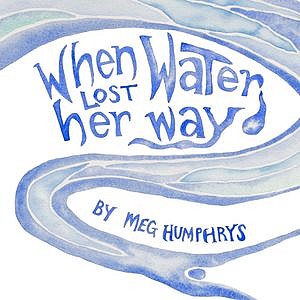
‘When Water Lost Her Way’ by Meg Humphreys is a creative and engaging story that personifies the water cycle. In this creative and gentle story, water is a confused character, trying to understand where she comes from and how she changes into different forms and sets about on a journey of self-discovery. At the end of this book is a section explaining scientific concepts, a diagram of the water cycle and a diagram to explain estimates of where water is stored. This is a sophisticated, yet accessible story for children about the water cycle.
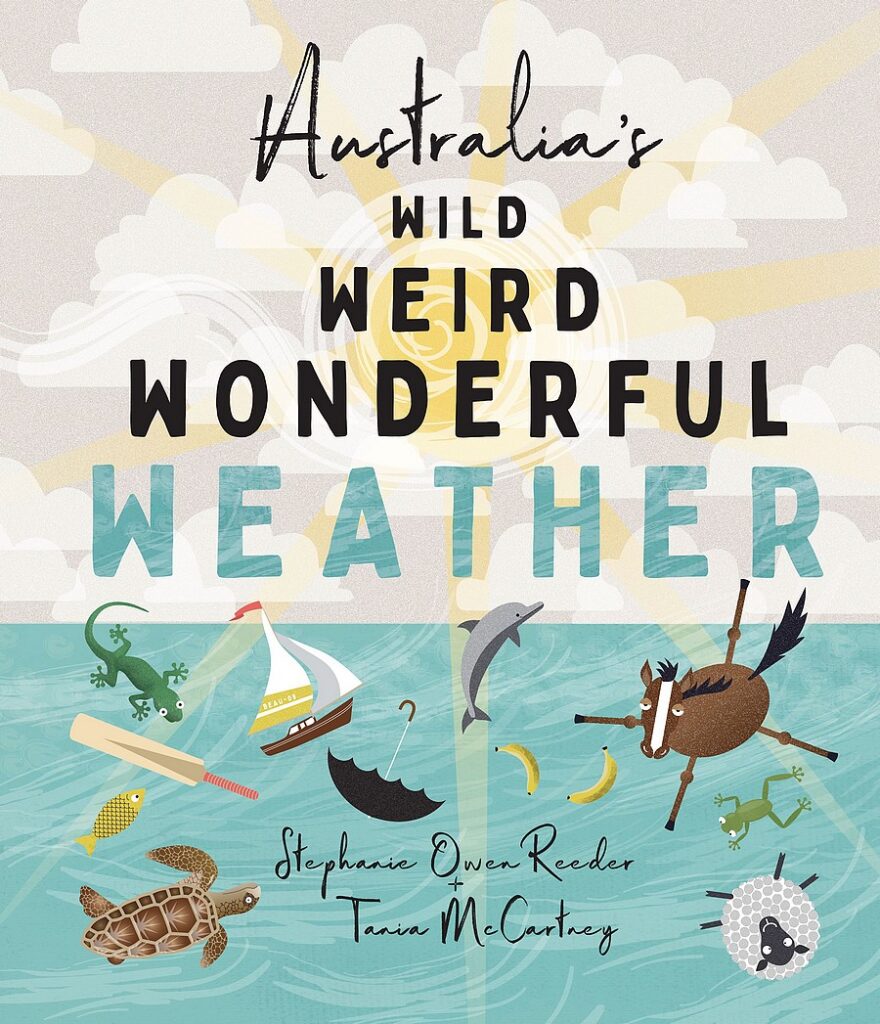
‘Australia’s Wild Weird Wonderful Weather’ by Stephanie Owen Reeder and illustrated by Tania McCartney explores in a highly visual and captivating way Australia’s unique and extreme weather events. It includes sections on the Aboriginal seasonal calendar, forecasting weather, the effects of climate change as well as fascinating facts and information about Australia’s extreme weather. The text is broken up with lively illustrations, making the information digestible. The book also encourages readers to consider their actions and the impact they have on the environment. The layout is captivating, bursting with colour and facts. There is also a glossary of weather words included at the back of the book.
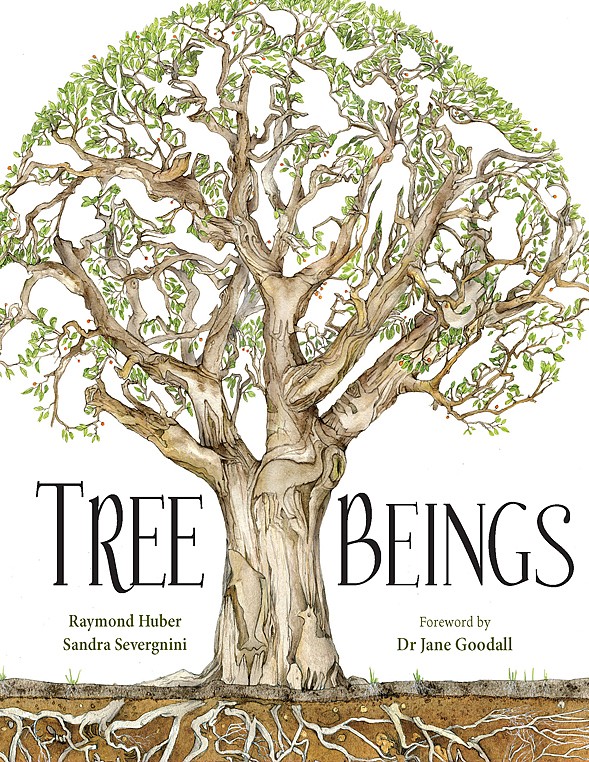
‘Tree Beings’ by Raymond Huber, illustrated by Sandra Severgnini with a Foreword by Dr. Jane Goodall is on our list for this month. I came across this title while researching the selection of books for this month and was able to view the contents, blurb and several pages online. I am very impressed with this unique book that appears to be highly engaging and informative. A detailed review of this book will be coming shortly.
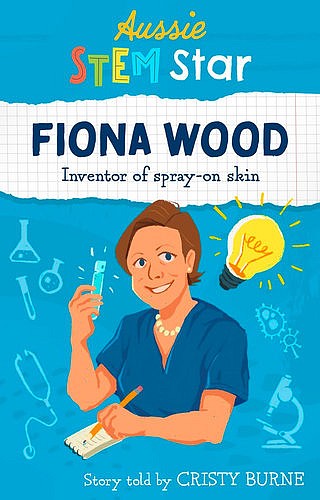
The Aussie Stem Star Series is a narrative nonfiction collection of books, created for children 10-13 years old contains three books including: ‘Aussie Stem Star: Georgia Ward-Fear Reptile biologist and explorer’ by Claire Saxby; ‘Aussie Stem Star: Fiona Wood Inventor of spray-on skin’ by Cristy Burne and ‘Aussie Stem Star: Munjed Al Muderis From refugee to surgical inventor’ by Dianne Wolfer. This series celebrates Australia’s experts in Science, Technology, Engineering and Mathematics. Each book follows a real life story and is written by an award winning author. Each title includes a contents page and explores the person’s childhood experiences, their inspiration, the hurdles and obstacles that were overcome, highlights in their journey and their contribution in their chosen field. It is evident in each of the books that the values of hard work, courage, kindness and resilience aided each of these trail blazers to revolutionise practices and treatments in their respective fields as well as make an enormous difference because of their medical or conservation research and work .
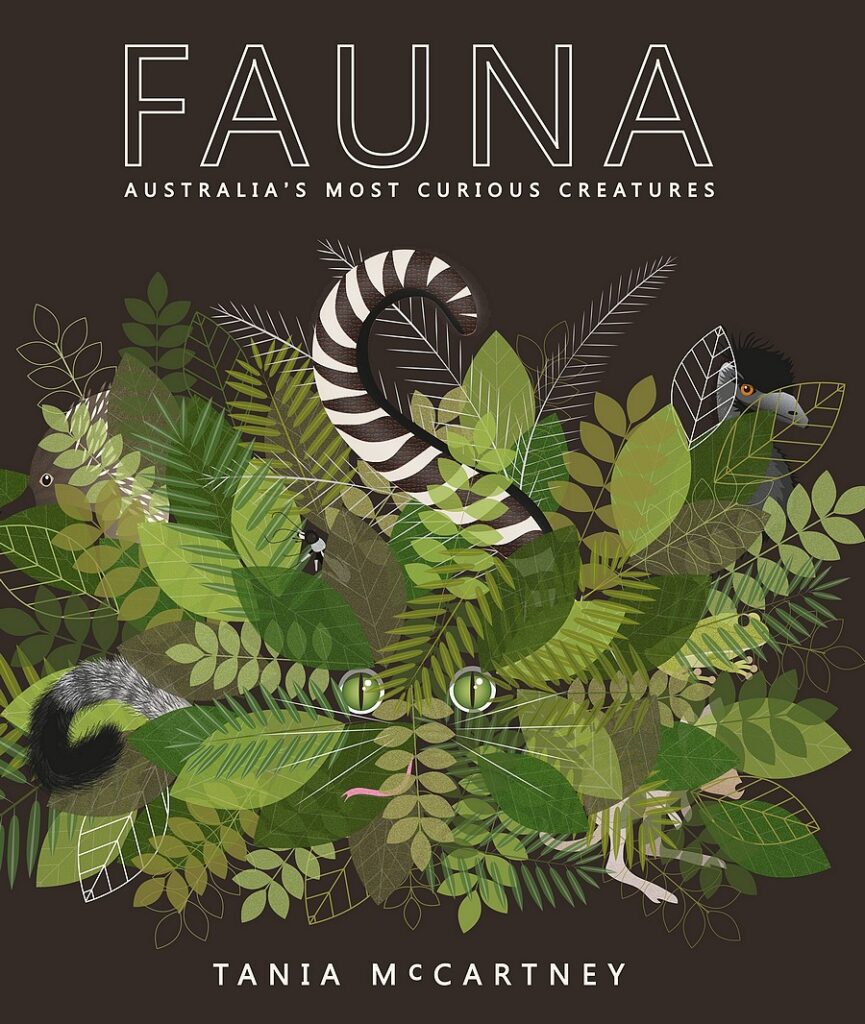
‘Fauna: Australia’s Most Curious Creatures’ by Tania McCartney is a brilliant nonfiction picture book which is visually driven and is chock full of interesting facts and information about well-known, as well as more unusual Australian animals (including Australia’s dinosaurs). This book features stylised illustrations and text which has been laid out in manageable ‘bite size’ sections for children to easily digest. There is so much information presented for each animal, some of which relates to the conservation status of each animal as well images reflecting the actual size of certain animal features or characteristics, for example the actual size of an animal at birth, or actual hatching or teeth size. The way the book has been laid out ensures that the information is not overwhelming and will captivate young readers as they are informed and entertained by this book.
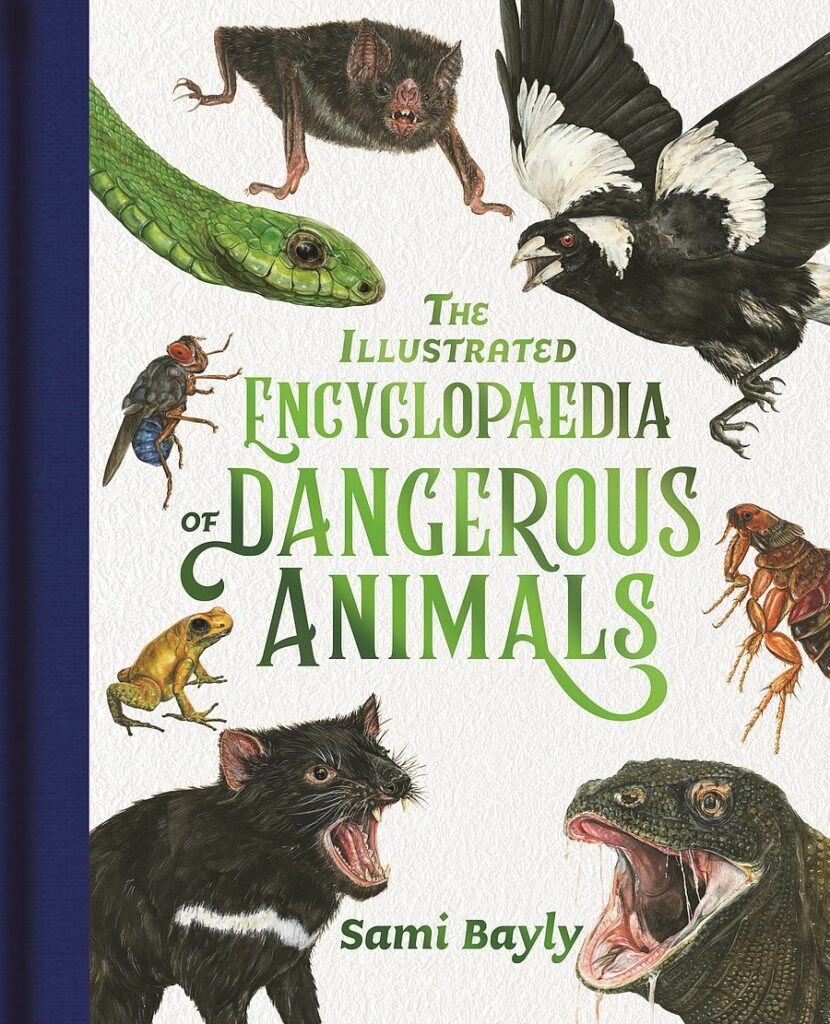
‘The Illustrated Encyclopaedia of Dangerous Animals’ written and illustrated by Sami Bayly is a celebration of sixty dangerous animals. Sami Bayly explores the ways in which these animals are important to the environment and explains the purpose behind each dangerous adaptation. Each animal (presented in alphabetical order) contains information relating to their description, dangerous factor, conservation status, diet, location/habitat as well as additional fun facts. The illustrations are striking and the detail included is mesmerising. This book is highly engaging and informative. It makes a perfect companion to Sami Bayly’s first book, ‘The Illustrated Encyclopaedia of Ugly Animals’

’Young Dark Emu: A truer History’ by Bruce Pascoe, the children’s version of Dark Emu is a vital read for all children and their families. At the very beginning of the book Bruce Pascoe explains his inspiration for the title of his work which is fascinating and sets the tone for considering an alternative and truer Australian history. This book has been created using numerous primary sources such as accounts as well as images from European explorers, colonists and farmers. Bruce Pascoe provides examples and evidence of what Australia was like pre-European colonisation and shares the sophisticated agriculture, aquaculture the First Nations people employed as well as their housing and comprehensive knowledge of fire as well as nurturing and sustaining the land. The final chapter in the book is titled ‘Sustainable Futures’ which contains a call to action to acknowledge Australia’s colonial history from the perspective of the Indigenous people and consider the Aboriginal Australians knowledge of land management and support the use of Indigenous practices This is a book that will no doubt inspire, challenge and encourage important conversations.

‘Finding Our Heart: A Story about the Uluru Statement for Young Australians’ by Thomas Mayer and illustrated by Blak Douglas is a must have book. This book is a call to action as it invites readers to listen and hear the First Nations voices of Australia, the voices that are over 65000 years old. These voices include the languages and the stories that have been passed down from one generation to the next that are filled with culture, knowledge and wisdom. This story invites children to learn the facts about Australia’s history and continue to appreciate Indigenous knowledge and expertise of the land and environment. This book contains the AIATSIS map of Indigenous Australia and the Uluru Statement from the Heart. There are also resources and suggestions at the back of the book for children to support the Uluru Statement. This story highlights that the heart of the nation can be found through the acknowledgement and respect of Aboriginal and Torres Strait Islander culture. As the back cover says, this is “a book about understanding Australia’s past, so we can have a shared future”.
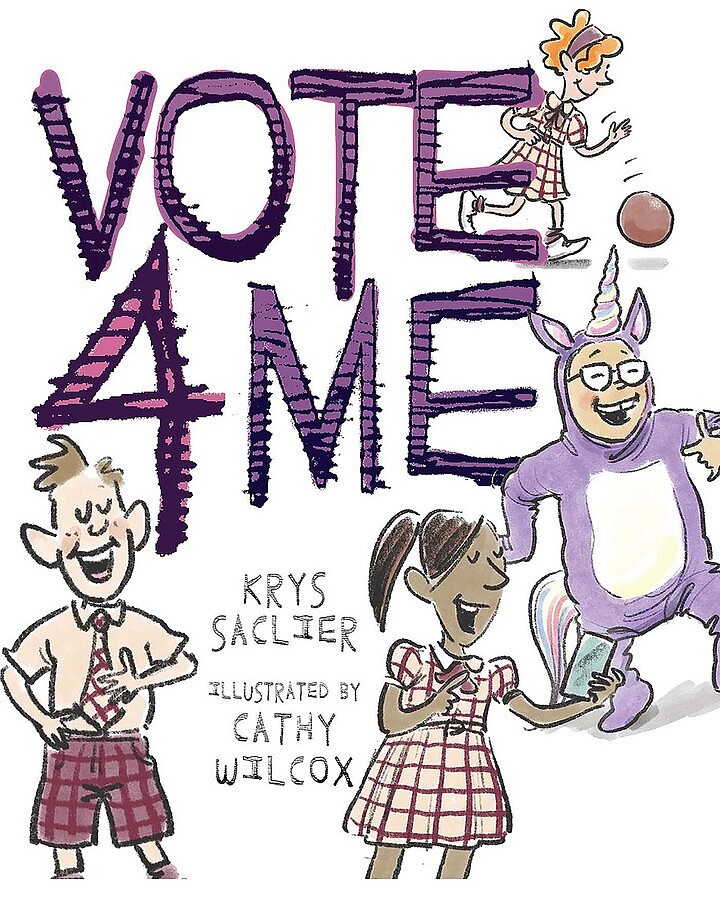
‘Vote 4 Me’ by Krys Saclier and illustrated by Cathy Wilcox is an engaging and educational book that explains the preferential voting system used in Australia to elect Federal members of Parliament to the House of Representatives. This book explains this process in a meaningful and accessible way for children by using the example of an election at a school. The story begins with the students at Mount Mayhem School who are desperate to see changes in their school (their uniform is “hideous”, the tuckshop lacks variety and their sports equipment is lacking). Every class is required to select a representative to act as a voice for their class. A Year 6 class has a number of class members wishing to nominate, so their teacher decides to have an election to choose their representative. The candidates campaign. The class votes. The teacher then uses the students’ ballots papers to explain how the preferential voting system works. The explanation is clear and interesting. The representatives work together to bring about positive changes for the school. At the end of the story there is more information about voting in Australia as well as a timeline detailing the history of voting in Australia. The illustrations bring the story to life and further assist with understanding the preferential voting system. This book is an excellent resource to help children (and adults) learns about the preferential voting system in a memorable way.
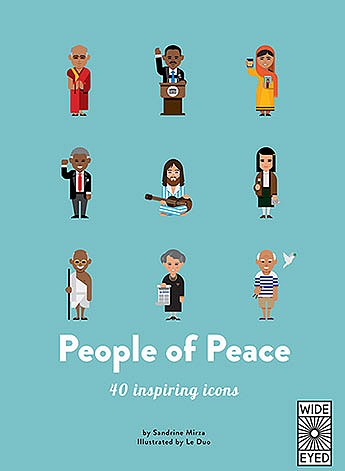
The 40 Inspiring Icons Series includes: People of Peace, Music Legends, Scientists, Greek Gods and Heroes. We own ’40 Inspiring Icons: People of Peace’ and will be ordering more in this series. ’40 Inspiring Icons: People of Peace’ by Sandrine Mirza and illustrated by Le Duo is presented in an infographic format. Each peace maker is presented on a double page spread which includes a concise biography, facts describing the person’s work and their achievements. The highly visual format makes this book unique and engaging for children, it serves as a great starting point to inspire further research about the figures included.
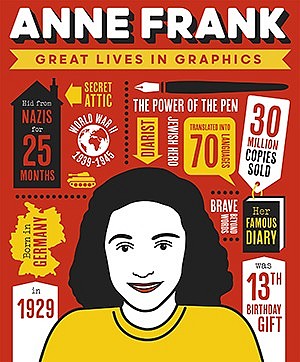
‘The Great Lives in Graphics’ series which includes Anne Frank, Cleopatra, Frida Kahlo, Jane Austen, Leonardo Da Vinci, Martin Luther King, Nikola Tesla and Stephen Hawking look fascinating. The Button Books website states that this new series is “a new way of looking at the lives of famous and influential people. It takes the essential dates and achievements of each person’s life, mixes them with lesser-known facts and trivia, and uses infographics to show them in a fresh visual way that is genuinely engaging for children and young adults. The result is a colourful, fascinating and often surprising representation of that person’s life, work and legacy. Using timelines, maps, repeated motifs and many more beautiful and informative illustrations, readers learn not just about the main subject of the book but also about the cultural background of the time they lived in”. After reading this I ordered numerous titles and will provide more information about them shortly.

‘The Friendly Games’ by Kay Baillie and illustrated by Fiona Burrows is a true story about John Ian Wing, the young boy responsible for changing the format of the closing ceremony of the 1956 Olympic Games in Melbourne and subsequently all the closing ceremonies at the Olympic Games. From an early age John took an avid interest in the Olympic Games and kept himself informed about them. When the games came to his place of residence, Melbourne, he was thrilled to see the opening ceremony on a television in a shop window. He was emotional and proud by the Olympic scenes and swept up in the buzz in Melbourne. John read all the newspaper articles about the Melbourne games and listened to the radio for additional updates. He became increasingly concerned that the controversies that were reported in the media at the time would tarnish people’s memory of the 1956 Olympic Games and overshadow all of the goodwill that he had observed and seen reported about the games. This disappointed John and strengthened his belief that this grand event needed to end with a ‘kapow’. Three days before the games finished, John was struck by inspiration and wrote a letter proposing an idea for the closing ceremony, complete with a diagram. He hand delivered his letter (which is in the national Library of Australia) to the office of the Organising Committee. Having heard no response, John was satisfied that he tried to make a difference. But the biggest surprises came when he witnessed the closing ceremony and then what ensued two days after the games closed. This story is a factual account and primary sources such as John’s audio and written interviews were used as well as newspaper articles, photos from the time, videos and archival footage to create the story and illustrations. This story illustrates the power of one young person making a difference. It is a story about inclusiveness, coming together as one and peace.

‘The Atlas Obscura Explorer’s Guide for the World’s Most Adventurous Kid:47 Countries, 100 Extraordinary Places to Visit’ by Dylan Thuras, Rosemary Mosco, Joy Ang (Illustrator) (the same team that created the New York Times bestseller, ‘Atlas Obscura’), has been touted as a “passport to a world of hidden possibilities”. This is an illustrated adventure containing bite size facts and information to 100 mysterious, fascinating and quite often astonishing places. Each two page spread features a region and showcases two unique places. An index and glossary is included. This atlas challenges readers to be open to possibilities, opportunities and the wonder that surrounds them. This is an atlas you will want to revisit and relive the adventures.
